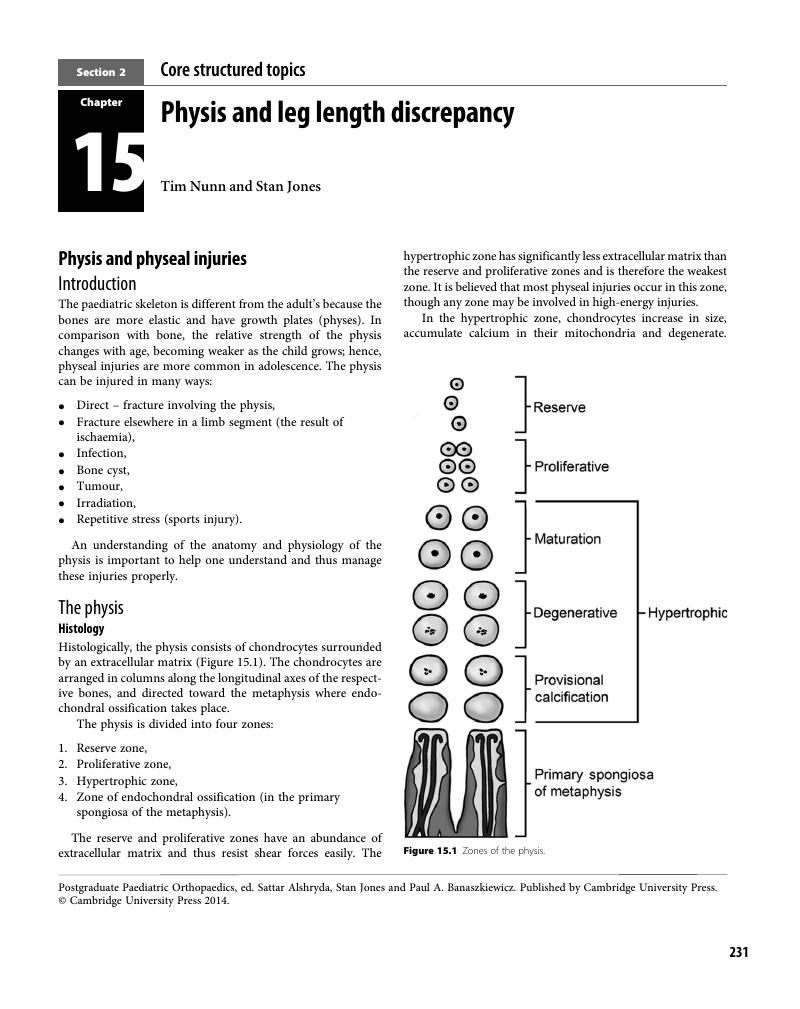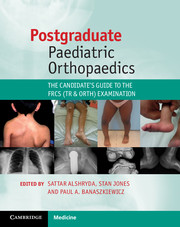Book contents
- Frontmatter
- Contents
- List of contributors
- Foreword
- Preface
- Acknowledgements
- Interactive website
- List of abbreviations
- Section 1 General guidance
- Section 2 Core structured topics
- Chapter 3 The hip
- Chapter 4 The knee
- Chapter 5 The foot and ankle
- Chapter 6 The spine
- Chapter 7 The shoulder
- Chapter 8 The elbow
- Chapter 9 Congenital hand deformities
- Chapter 10 Neuromuscular diseases
- Chapter 11 Musculoskeletal infections
- Chapter 12 Musculoskeletal tumours
- Chapter 13 Skeletal dysplasia
- Chapter 14 Metabolic bone disease
- Chapter 15 Physis and leg length discrepancy
- Chapter 16 Deformity corrections
- Chapter 17 Miscellaneous paediatric conditions
- Section 3 Exam-related material
- Index
- References
Chapter 15 - Physis and leg length discrepancy
Published online by Cambridge University Press: 05 August 2014
- Frontmatter
- Contents
- List of contributors
- Foreword
- Preface
- Acknowledgements
- Interactive website
- List of abbreviations
- Section 1 General guidance
- Section 2 Core structured topics
- Chapter 3 The hip
- Chapter 4 The knee
- Chapter 5 The foot and ankle
- Chapter 6 The spine
- Chapter 7 The shoulder
- Chapter 8 The elbow
- Chapter 9 Congenital hand deformities
- Chapter 10 Neuromuscular diseases
- Chapter 11 Musculoskeletal infections
- Chapter 12 Musculoskeletal tumours
- Chapter 13 Skeletal dysplasia
- Chapter 14 Metabolic bone disease
- Chapter 15 Physis and leg length discrepancy
- Chapter 16 Deformity corrections
- Chapter 17 Miscellaneous paediatric conditions
- Section 3 Exam-related material
- Index
- References
Summary

- Type
- Chapter
- Information
- Postgraduate Paediatric OrthopaedicsThe Candidate's Guide to the FRCS (Tr and Orth) Examination, pp. 231 - 239Publisher: Cambridge University PressPrint publication year: 2014



